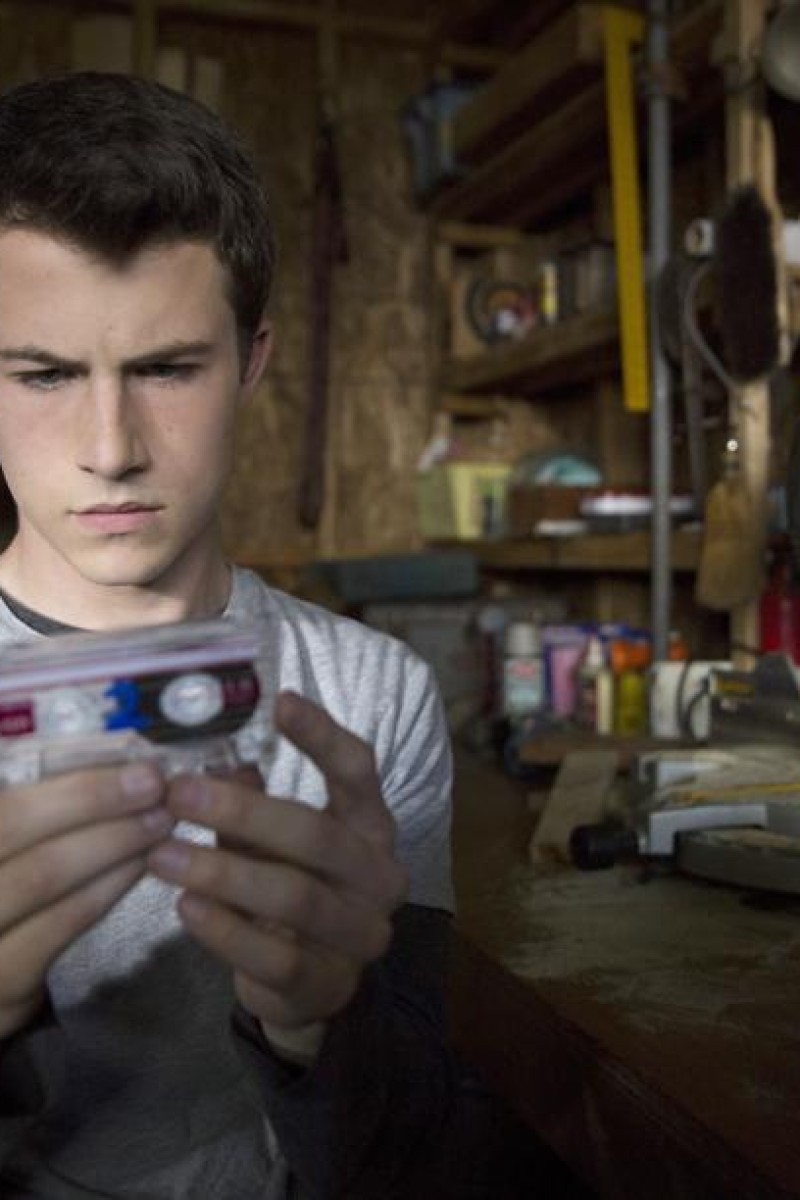
Selena Gomez-produced Netflix show ‘Thirteen Reasons Why’ a disappointment, proving that sometimes adults don't know best
Jay Asher's 2007 novel gets the small-screen treatment - but it's too focused on adult reactions to teen problems to be a winner
 Clay Jensen (Dylan Minnette) discovers a cassette tape explaining why Hannah Baker took her life
Clay Jensen (Dylan Minnette) discovers a cassette tape explaining why Hannah Baker took her lifeTeenagers. Mention them and their issues to adults, and those adults seem to make it All About Them.
Netflix’s agonisingly sordid new drama Thirteen Reasons Why, based on Jay Asher’s best-selling 2007 young-adult novel about the suicide of a high school student, seems to come from the same place: ostensibly about teenagers, the series instead is overburdened with adult concern. In the same way Thirteen Reasons Why shows up on teachers’ summer reading lists (necessitating adult-facilitated discussion groups), the TV series is full of parents knocking on bedroom doors asking if everything’s OK and being firmly, resoundingly told to go away. Nothing for these teens is ever OK.
There are 13 episodes lasting 13 super-sullen hours - a passive-aggressive, implausibly meandering, poorly written and awkwardly acted effort that is mainly about miscommunication, delivering no more wisdom or insight about depression, bullying and suicide than one of those old “Afterschool Specials” people now mock for being so corny.
Yet it's likely Thirteen Reasons Why will be quite the hit among the young and bingeful set - especially those who have some emotional investment in Asher’s novel. For all the clumsiness in its structure and execution, Thirteen Reasons Why correctly depends on the river of angst that runs beneath the cultural psyche of the American teen. You can never underestimate its entertainment value - which the adults in charge of putting this together know, because they’ve all been there.
Nevertheless, the show’s problems begin with a central, impossibly emo premise: a typically self-conscious yet outwardly well-adjusted student at Liberty High named Hannah Baker (Katherine Langford) has committed suicide, leaving behind a shoe box full of cassette tapes (yes, in 2017; have you actually ever seen one?!) on which she recounts the ways that 13 people are collectively responsible for the 13 reasons she has decided to take her own life. The box of cassettes, per Hannah’s instructions, are to be passed around to each of these people (all but one of them a fellow student) so that they can listen to them and truly understand her pain - and wallow in it as deeply as they like.
It’s an unbelievable and selfish conceit, a protracted example of the teenager who fantasises how everyone will react when she’s gone. The story - as first told by Asher’s novel and now developed into this series by Pulitzer-winning playwright Brian Yorkey (Next to Normal) - comes acorss as remarkably, even dangerously, naive in its understanding of suicide, up to and including a gruesome, penultimate scene of Hannah opening her wrists in a bathtub. Whatever Thirteen Reasons Why gets right about teen tendencies toward melodrama fades as the series fumbles around with tone and emotional accuracy. The characters very rarely come across as real, perhaps because the story itself is so contrived.
The cassettes make their way to Clay Jensen (Dylan Minnette), a nice boy who had a flirtatious crush on Hannah. As Clay listens he becomes torturously obsessed with confronting each of the peers who made Hannah’s life hell, whether by bullying (her name shows up on a hot-or-not list with derogatory language; a date with a jock leads to an embarrassing picture texted all over school) or creeping (the yearbook photographer who stalks her), or committing lesser microaggressions (such as publishing her anonymous poetry in the school’s underground ’zine without her permission). As Clay keeps listening, things get worse, including two incidents that make the popular crowd worry that Clay might take the tapes to school authorities or to Hannah’s grieving parents (Kate Walsh and Brian d’Arcy James), which could get everyone into serious trouble.
Thirteen Reasons Why seems intent on keeping viewers in an ambivalent state about whether Hannah - dead or alive - is a sympathetic or trustworthy character, making it an especially cruel experience to watch. What Thirteen Reasons Why could really use is the deft touch shown 20 years ago by Marshall Herskovitz and Ed Zwick in their short-lived-yet-forever-loved series My So-Called Life, which allowed a young Claire Danes to say in a few gestures what so many teenagers (in any era) truly agonise over, while also capturing the helplessness that parents can feel during the rockiest phases of adolescence.
All the reasons why you need to catch A Series of Unfortunate Events on Netflix before it disappears
Thirteen Reasons Why exhibits no such grace, bogged down mainly by its own structural mess and a creative team (including actress/singer Selena Gomez and Spotlight director Tom McCarthy) that has junked up these teenagers’ stories with grown-up affectations, right down to the show’s alt-’80s soundtrack. (Echo and the Bunnymen? Bob Mould? It’s all straight off Dad’s playlists.) Hannah, who is dead, is narrating through her tapes, while Clay, who is alive, is taking the story forward. But too often the narrative perspective becomes omniscient and burdens every character (teenager and adult) with a story that flashes from past to present.
There’s also an egregious problem with length, taking a 288-page novel and stretching it far beyond what it has to offer. With so much plodding along, the actors in Thirteen Reasons Why find themselves shouting unsatisfying dialogue at one another in redundant scenes that loop over and over. More doors are slammed. More parents wonder: "Why won’t my child talk to me?" Each time Clay pops one of Hannah’s cassettes into his preciously retro Walkman, the answer becomes more clear: these poor kids are talked to death.